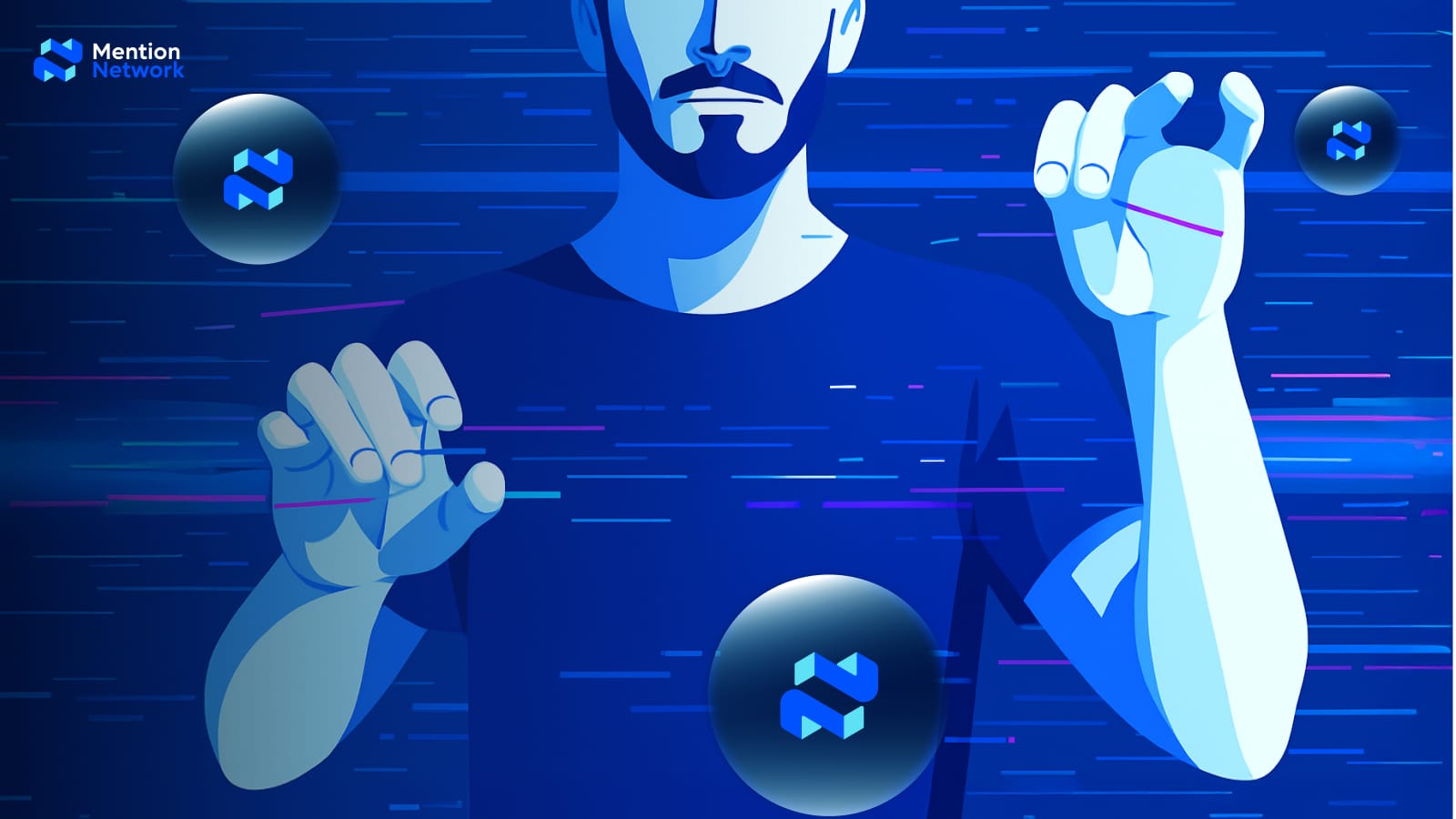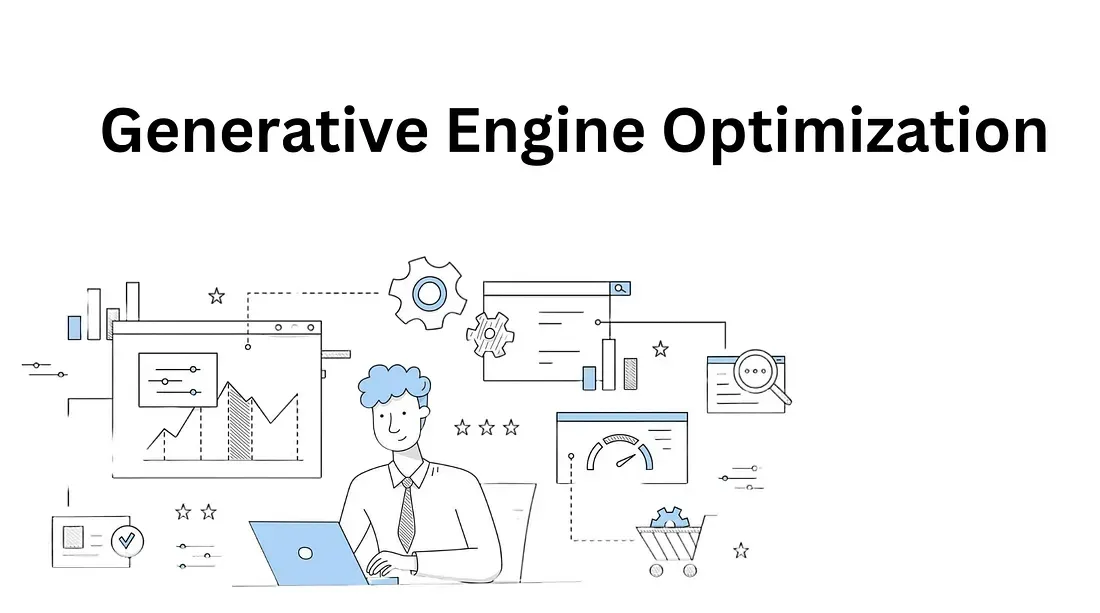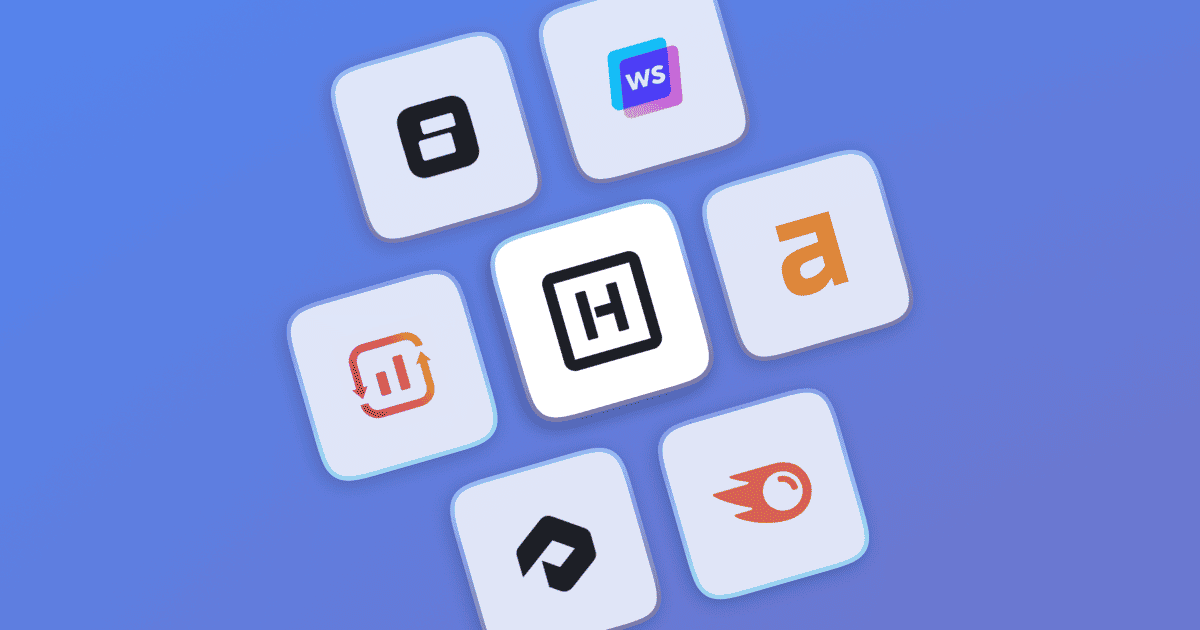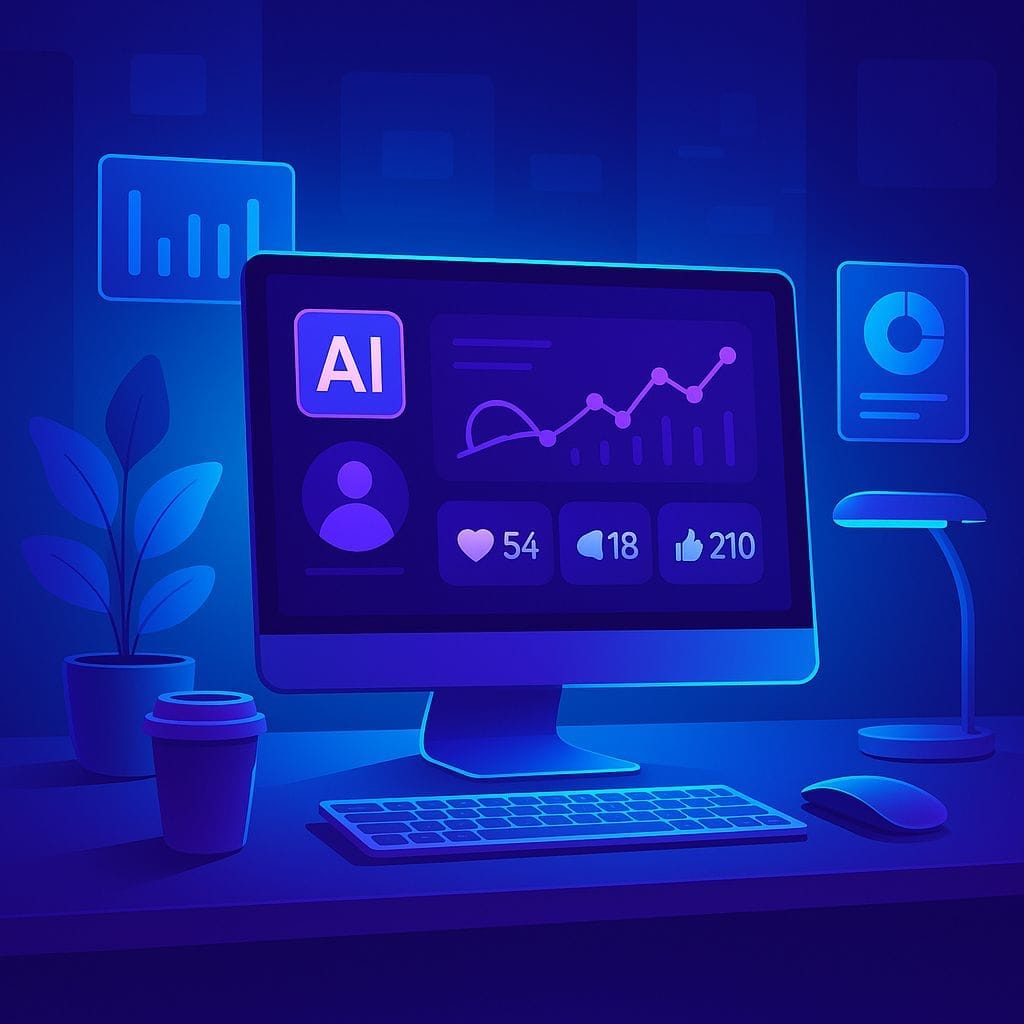Boost SEO with AI Search Monitoring and Reporting

The search landscape has fundamentally changed. While Google still processes billions of queries daily, platforms like ChatGPT, Perplexity, and Claude now shape buying decisions before users ever reach your website. ChatGPT reached 800 million weekly users by 2025, and 79% of consumers are expected to use AI-enhanced search within the next year. Traditional SEO tracking captures your blue link rankings but leaves you blind to the AI conversations that increasingly determine brand visibility. AI search monitoring solves this gap by revealing how your content appears in AI-generated responses, whether you're being cited as a source, and where competitors outrank you in the algorithms that matter most to modern buyers.
- AI search platforms now influence buying decisions before users visit traditional search results
- Monitoring tools track brand mentions, citations, sentiment, and share of voice across ChatGPT, Gemini, Claude, and Google AI Overviews
- Early data shows conversions from AI search outperform traditional search despite lower overall volume
- GEO strategies can boost visibility by up to 40% in generative engine responses
- Successful implementation requires platform-specific optimization across multiple AI engines
Why AI Search Monitoring Matters More Than You Think

Traditional SEO metrics tell you what happened on search engine results pages. AI search monitoring reveals what happens in the conversations shaping purchase intent. Backlinko's LLM-driven traffic increased 800% year-over-year, signaling a fundamental shift in how audiences discover brands. The distinction matters because AI platforms don't just rank content, they synthesize it into direct answers that replace the need to visit multiple websites.
Users spend 6 minutes per session with AI search compared to seconds on Google. This extended engagement means prospects arrive more informed, more qualified, and closer to conversion decisions. Conversions from AI search are higher by percentage because users perceive AI recommendations as more trustworthy than ad-driven results.
The challenge is visibility. Analysis indicates sites not optimizing for AI search face significant traffic risk, with one report warning of a potential 50% decrease in organic clicks by 2028. Without monitoring, you operate blind to whether AI platforms cite your content, recommend competitors instead, or misrepresent your brand positioning.
Why it matters: AI search creates what industry practitioners call the "AI Dark Funnel," where the initial stages of the user journey occur within closed AI systems that traditional web analytics cannot track. Your prospects are researching, comparing, and forming opinions in spaces you can't measure with conventional tools. AI search monitoring illuminates this previously invisible portion of the buyer journey.
Understanding Generative Engine Optimization and Its Measurement

Generative engine optimization (GEO) describes strategies intended to influence how large language models retrieve, summarize, and present information in response to user queries. While SEO focuses on ranking in link-based indices, GEO targets direct inclusion in AI-generated answers. The measurement challenges differ fundamentally from tracking traditional SERPs.
AI tracking monitors how your brand and content appear in AI-generated responses across ChatGPT, Claude, Gemini, and Google AI Overviews, showing which keywords trigger your content, tracking sentiment in AI answers, and identifying exactly which URLs are being cited by each LLM. Modern monitoring platforms analyze multiple dimensions:
- Brand mentions: When AI directly recommends your product or service
- Citation tracking: How often your content sources AI-generated answers
- Sentiment analysis: Whether AI describes your brand positively, negatively, or neutrally
- Share of voice: Your mention frequency compared to competitors
- Content gaps: Questions where you should appear but don't
Research demonstrates that GEO can boost visibility by up to 40% in generative engine responses, but the efficacy varies significantly across domains and requires systematic measurement to optimize effectively.
How it works: You create a prompt library of conversational questions prospects actually ask, and monitoring platforms automatically run these across multiple AI engines, identifying which brands get cited, how often, and in what context. This reveals your Share of AI Voice, the percentage of citations you own versus competitors, and highlights which queries you're winning or losing.
Choosing the Right AI Search Monitoring Platform

The monitoring tool landscape evolved rapidly through 2025 as dozens of platforms emerged to address different needs. The strategic question isn't whether to monitor, but which combination of tools provides the insights your specific situation requires without creating data overload.
SEOmonitor unified Google, AI Overviews, and ChatGPT tracking in one dashboard, exemplifying the trend toward consolidated visibility. Enterprise platforms like Nightwatch track brand visibility across ChatGPT, Claude, Gemini, and Perplexity AI responses, monitoring rankings from 190,000 locations worldwide. Mid-market options like Otterly.AI automatically track brand mentions and website citations with fully automated weekly reports.
Platform selection depends on your monitoring priorities:
The practical approach combines tools strategically. Use enterprise platforms for comprehensive monitoring and competitive intelligence. Layer specialized tools for specific platforms or geographic markets. Validate with free checkers like Am I On AI for quick spot checks without burning credits.
Implementing an Effective AI Search Monitoring Strategy

Successful monitoring requires more than subscribing to platforms and reviewing dashboards. The implementation determines whether you gain actionable intelligence or just accumulate more data. Start by defining what visibility means for your business beyond generic brand mentions.
Step 1: Map your AI search footprint
Define custom prompts that mirror real user queries your prospects actually ask. Generic brand searches provide baseline visibility but miss the high-intent questions driving purchase decisions. If you sell project management software, track prompts like "what's the best project management tool for remote teams" alongside branded searches. This reveals both brand awareness and consideration-stage visibility.
Step 2: Establish baseline metrics
Track when, where, and how AI tools mention your brand, measuring overall visibility across AI engines, identifying gaps, and checking what drives competitor mentions. Document current share of voice, citation frequency, sentiment distribution, and which content AI platforms reference most often. This baseline enables meaningful progress measurement as you optimize.
Step 3: Integrate with existing analytics
The goal is to leverage AI tracking data to tell a coherent story of how anomalies observed in traditional metrics are happening. A drop in Google Search Console clicks might indicate failure until AI monitoring reveals brand mentions in AI Overviews increased 30%, turning an apparent performance problem into a brand authority opportunity.
Step 4: Implement systematic optimization
GEO requires analyzing AI-generated content structures, citation patterns, and how they evolve over time to refine strategies, ensuring alignment with AI content processing and prioritization. Research from Princeton, Georgia Tech, and other institutions identified specific tactics that significantly improve visibility:
- Cite authoritative sources: Enhancing credibility through reliable references
- Add relevant statistics: Supporting arguments with quantitative data increases trust
- Optimize for fluency: Clear, readable content performs better than keyword-stuffed text
- Include quotations: Expert perspectives boost credibility, particularly in humanities and social topics
- Structure content clearly: AI models parse hierarchical information more effectively
The best combination, Fluency Optimization and Statistics Addition, outperformed any single GEO strategy by more than 5.5%, demonstrating that layered approaches yield superior results.
Step 5: Monitor and iterate continuously
AI algorithms evolve constantly. Prompts are continuously checked to ensure statistical significance, with every keyword updated in dashboards at least once per week. Weekly monitoring cadence balances freshness with resource efficiency, enabling teams to spot trends before they become crises and capitalize on visibility spikes while they matter.
Platform-Specific Optimization Strategies That Actually Work
Generic GEO advice fails because different AI platforms prioritize different signals. ChatGPT, Perplexity, Claude, and Google AI Overviews operate on distinct architectures with varying citation behaviors. Platform-specific optimization recognizes these differences and tailors content accordingly.
How Different AI Platforms Prioritize Content
The strategic implication is clear: effective GEO requires maintaining content variants optimized for different platform priorities rather than a single "AI-optimized" version. This increases production complexity but dramatically improves total visibility across the AI search ecosystem.
Measuring ROI and Justifying Investment in AI Search Monitoring
Budget holders often question the ROI of new tools, especially AI search monitoring, because direct revenue attribution is difficult. The business case must highlight both defensive and offensive value.
Defensive Value (Protecting Market Share)
- Protect Influence: 70% of consumers already trust generative AI results. If AI cites a competitor instead of your brand for a key query, you lose influence early in the buying cycle.
- Cost of Insurance: Monitoring is an insurance policy against becoming invisible in the channels that are increasingly determining buyer awareness.
Offensive Value (Capturing New Opportunities)
- Conversion Uplift: Companies report up to a 10% increase in conversions over six months by using AI search insights to update their content.
- Citation Momentum: Identifying which topics generate citations allows you to create authoritative content that captures those opportunities. Early movers gain an advantage that is difficult to displace.
Operational and Competitive Gains
- Efficiency: Automated brand monitoring saves up to 80% of the time previously spent on manual checks, allowing teams to focus on strategic optimization.
- Competitive Intelligence: Monitoring reveals which competitors dominate specific AI conversations, showing you market positioning strategies and content gaps to exploit.
Measurement Framework: Track leading indicators (like citation frequency, sentiment, and share of voice) alongside lagging indicators (like branded search volume and qualified leads).
The Future of Search Visibility Measurement

AI search monitoring exists within a broader transformation of how brands achieve and measure digital visibility. The convergence of traditional SEO, generative engine optimization, and emerging technologies creates both complexity and opportunity for teams willing to adapt their strategies.
Recent data indicate approximately 53% of website traffic continues originating from traditional organic search, yet an estimated 58% of queries are now conversational in nature. This disparity reveals the transition phase we occupy: searches increasingly use conversational patterns even within traditional interfaces, preparing users for native AI search experiences. Organizations treating GEO as separate from SEO will struggle as these disciplines merge.
The practical implication is integration, not replacement. Teams achieving the best results maintain traditional SEO excellence while layering GEO practices that improve performance across both traditional and AI-driven discovery. Content structured for AI parsing performs better in featured snippets. Authoritative citations boost domain authority that benefits conventional rankings. The disciplines reinforce each other when implemented thoughtfully.
The Challenge: As AI platforms grow, success requires accepting that measuring impact will be more probabilistic (focused on overall business momentum) rather than strictly deterministic.
Conclusion: Building Durable Visibility in the AI Era
The time to act on AI search is now.
Speed is Critical: Traditional SEO matured over decades. AI search patterns are solidifying in months. The window to establish authoritative positioning is rapidly closing.
Execution is Everything:
- Implement strategic monitoring and systematic optimization.
- Select tools that integrate with existing workflows.
- Focus measurement on business outcomes, not just vanity metrics.
- Build cross-functional capability between SEO, content, and data teams.
Visibility has always required deliberate effort. AI search simply rewards brands that understand the new rules and systematically optimize for the mechanisms that determine visibility.
Frequently Asked Questions
What's the difference between SEO tracking and AI search monitoring?
SEO tracks traditional search rankings. AI Monitoring tracks how your brand is cited (and with what sentiment) in AI answers (e.g., ChatGPT, Claude, Perplexity).
Can I track AI search visibility in Google Search Console?
Google Search GSC has some AI Mode data but doesn't separate it from traditional results, making dedicated AI monitoring tools necessary for specific analysis.
Which AI platforms should I prioritize for monitoring?
Start with Start with ChatGPT, Google AI Overviews, and Perplexity (largest user bases). Add Claude and Gemini based on your audience.
How often should I check my AI search visibility?
Weekly for efficiency. Daily for high-stakes launches. Allow time for AI responses to reflect optimization changes.
What's a good benchmark for share of voice in AI search?
Focus on improving your baseline. 20–30% SOV on key category queries generally indicates strong positioning in most markets.

